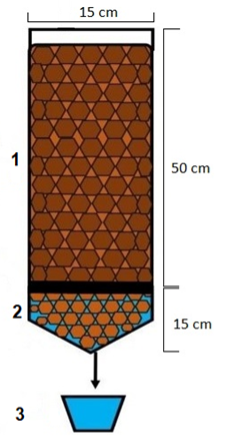 |
|
Leachates that are generated in the sanitary landfills constitute a contamination problem for which a treatment is necessary. A viable alternative is an application of bioreactors packed with stabilized materials. In the present work, materials with two different ages were tested, which came from different closed sites. The stabilized materials (SM) were physically characterized with parameters such as humidity, volatile solids, pH, electrical conductivity and density. The bioreactor system was operated for a period of 30 weeks in two stages, by use of a complete 22 factorial design. In stage I, the study factors were the hydraulic head (25 and 40 L/m3d) and the age of the SM (7 and 11 years), whereas in stage II the factors evaluated were age of the SM and type of feeding (continuous and semi-continuous). The highest average efficiency in pollutant removal was 70% for COD and 81% for BOD5 and color, which corresponded to a combination of factors, namely young and stabilized materials, continuous feeding and a hydraulic load of 25 L/m3d. The final effluent had average values of 905 mg/L, 130 mg/L, 2388 Pt-Co and 0.09, for COD, BOD5, color and BI, respectively, for which a final purification stage was still required.
Keywords: Stabilized Material-Young, Stabilized Material-Old, Landfill, Mature Leachate, Hydraulic Load.
|
|
 |

